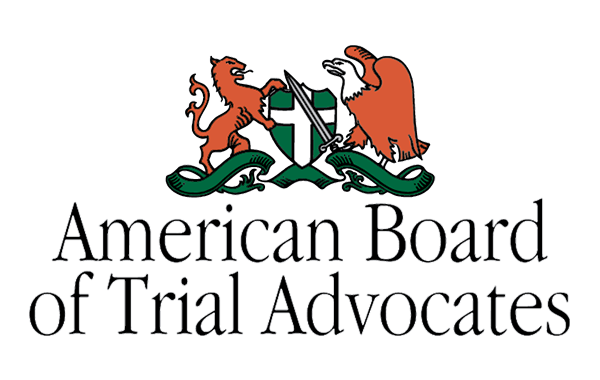Cycling through Texas offers a mix of scenic views, fresh air, and a great way to get around. However, it also comes with its share of risks, especially when sharing the road with larger vehicles. Bicycle accidents can happen unexpectedly, leaving you in shock, injured, and unsure of what to do next. It’s essential to know how to protect your rights after a Texas bicycle accident. The steps you take immediately after the incident can have a long-lasting impact on your recovery and any legal actions you might need to pursue. At, Chavez Law Firm , we are here to guide you through the legal process and help you navigate the complexities of your case.








Stay Calm and Assess the Situation
The first moments after a bicycle accident can be overwhelming. Your heart is racing, and your mind is flooded with thoughts. It’s important to try and remain calm. Take a moment to assess the situation. Are you hurt? Is anyone else involved injured? It’s crucial to ensure everyone’s safety before taking any further steps.
If you’re able to, move yourself and your bicycle out of harm’s way. This can prevent further accidents or injuries from passing vehicles. However, if you or someone else is seriously injured, it’s better to stay still and wait for help to arrive. In cases where injuries are severe, moving could worsen the situation. The safety of everyone involved should always come first.
Call for Help and Report the Accident
Once you’ve assessed the situation and ensured your safety, it’s time to call for help. Dial 911 to report the accident, even if the injuries seem minor at first. Some injuries, like concussions or internal damage, may not show symptoms immediately but can worsen over time. Calling for emergency assistance ensures that medical professionals are on the scene to provide care, and it also documents the accident.
When the police arrive, they will take down the details of the accident and create an official report. This police report can be a crucial piece of evidence if you decide to file a claim or take legal action later on. Make sure to provide accurate and honest information about what happened.

Protecting Your Rights
Document the Scene and Gather Information
If you’re physically able, documenting the scene of the accident can be incredibly important. This includes taking pictures of the accident scene, your bicycle, any involved vehicles, and your injuries. Photos can capture details that may fade over time or be disputed later. These images can serve as evidence to back up your version of events if there are disagreements about how the accident occurred.
It’s also essential to gather information from everyone involved in the accident. This includes the names, phone numbers, and addresses of drivers, passengers, and witnesses. Make sure to get the driver’s license information, insurance details, and the make and model of any vehicles involved. If there are any witnesses to the accident, ask for their contact information as well. Witnesses can provide valuable testimony if the case goes to court or if there’s a dispute about who was at fault.
Seek Medical Attention Immediately
Even if you feel fine after the accident, it’s crucial to seek medical attention as soon as possible. Some injuries may not be immediately apparent due to the adrenaline rush or shock following the accident. Getting a thorough medical evaluation will ensure that any hidden injuries are identified and treated promptly. Your health should always be the top priority.
In addition to taking care of your well-being, seeing a doctor creates a medical record that can be important if you decide to file a claim. Medical documentation can show the extent of your injuries and the treatments required. This information can be essential when calculating the compensation you might be entitled to for medical bills, lost wages, and pain and suffering.
Don’t Admit Fault or Apologize
In the heat of the moment, it’s common to want to apologize or accept responsibility, especially if you feel you may have contributed to the accident. However, admitting fault or apologizing can be used against you later, even if you were not entirely to blame. In Texas, laws regarding fault in accidents can be complicated. The state follows a comparative negligence rule, which means you can still recover damages even if you were partially at fault, as long as you were less than 51% responsible for the accident.
It’s important to avoid discussing blame at the scene of the accident. Instead, stick to the facts when talking to the police, other parties involved, and insurance companies. Let the investigation determine who was at fault. Any admission of fault could affect your ability to receive compensation.
Notify Your Insurance Company
Once the accident has been reported to the police and you’ve sought medical attention, it’s time to notify your insurance company. Texas law requires that drivers carry minimum liability insurance, and if a motor vehicle was involved in your bicycle accident, their insurance may be responsible for covering your damages.
When speaking to your insurance company, be honest and provide them with the necessary information about the accident. However, avoid giving recorded statements or accepting any settlements without first seeking legal advice. Insurance companies often aim to minimize their payouts, so it’s important to ensure that your rights are protected before agreeing to any settlement offers.
Understand Your Legal Rights and Options
Bicycle accidents in Texas can lead to complicated legal situations, especially when it comes to determining fault and liability. Texas is an at-fault state, meaning the person responsible for the accident is liable for any damages. This could include the driver of a motor vehicle, another cyclist, or even a pedestrian, depending on the circumstances.
If you were injured in the accident, you might be entitled to compensation for medical expenses, lost wages, pain and suffering, and damage to your property. It’s important to understand your rights and explore your options for seeking justice and compensation. Depending on the severity of your injuries and the details of the accident, you may need to file a personal injury claim.
Consult with a Legal Professional
Navigating the aftermath of a bicycle accident can be challenging, especially when dealing with insurance companies, medical bills, and legal complexities. Consulting with a legal professional who is familiar with Texas personal injury laws can make a significant difference in how your case is handled.
A legal professional can guide you through the process, helping you gather the necessary evidence, negotiate with insurance companies, and represent you in court if needed. They can ensure that your rights are protected and that you receive fair compensation for your injuries and other losses.
Take Time to Recover and Focus on Healing
After a bicycle accident, it’s essential to give yourself time to heal physically and emotionally. Accidents can be traumatic experiences, and recovery may take longer than expected. Don’t rush back into your regular routine until you’ve fully recovered. Follow your doctor’s advice and attend all follow-up appointments to ensure a smooth recovery process.
In addition to focusing on your physical recovery, take care of your mental and emotional well-being. It’s normal to feel shaken or anxious after an accident. Talking to friends, family, or a counselor can help you cope with the emotional aftermath.
If you’ve been involved in a bicycle accident in Texas, knowing your rights and protecting them is crucial. You don’t have to face this situation alone. The Chavez Law Firm is here to help guide you through the legal process and ensure that you receive the compensation you deserve for your injuries and losses. With experience in handling bicycle accident cases, the firm is committed to standing by your side every step of the way. To get started, reach out to the Chavez Law Firm and let their team handle the legal complexities so you can focus on your recovery. Contact the firm today to discuss your case and take the first step toward getting your life back on track.



